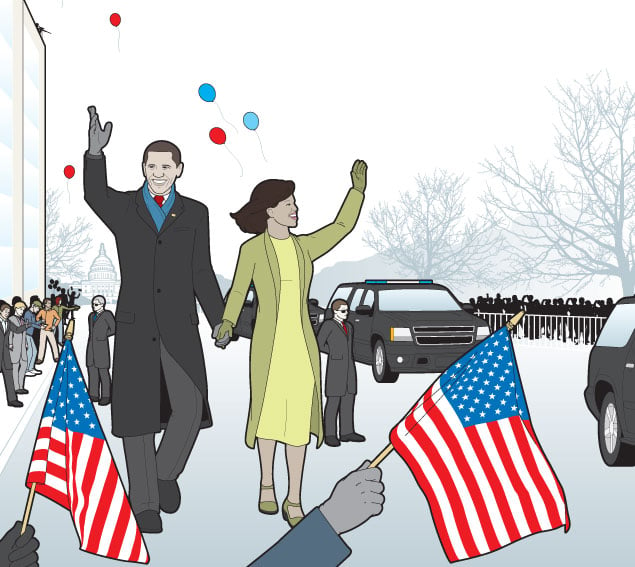- The Joint Task Force in the National Capital Region, part of the armed services, begins preparations a year in advance.
- After the election, the Presidential
Inaugural Committee takes the lead in planning the parade. In 2009, the committee trained 17,000 volunteers. - In mid-November, the parade route along Pennsylvania Avenue is re-paved, at a cost of $2 million.
- The Secret Service takes the lead on security. For Obama’s first inaugural, more than 40,000 law-enforcement officers from 94 government agencies were
on duty. - The Secret
Service gets keys to all buildings on the route. In 2009,
agents taped closed all utility rooms and circuit
boards, according to Ron Kessler’s In the President’s Secret Service. - Sharpshooters are positioned on rooftops. In 2009, garages facing Pennsylvania Avenue were sealed and windows along the route had to be closed when the motorcade passed.
- Streetlights on Pennsylvania Avenue are decorated with flags and special eagle-topped lamp globes.
- Nearby manholes and underground tunnels are checked and then welded shut. Mailboxes and trash cans are removed or
taped closed. - During the parade, the Coast Guard patrols the Potomac River and Air Force fighter jets circle overhead.
- Access to buildings on Pennsylvania Avenue is restricted. In 2009, employees had to show IDs to enter offices and hotel guests had to show room keys. Guest lists for parties of more than 100 people were submitted for security review.
This article appears in the January 2013 issue of The Washingtonian.


















